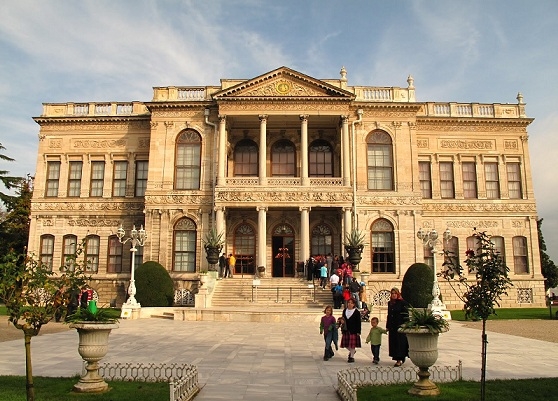A Comprehensive Guide to Dolmabahce Palace

Introduction:
Istanbul, a city bridging two continents with a vibrant history, houses a gem that epitomizes opulence and sophistication – Dolmabahce Palace. Situated on the European side of the Bosphorus Strait, this palace is a striking example of Ottoman architectural grandeur. In this guide, we will explore the history, architecture, and the delightful experiences that await visitors at Dolmabahce Palace.
History:
Dolmabahce Palace, meaning "Filled Garden" in Turkish, was commissioned by Sultan Abdulmecid I in the mid-1800s. Departing from traditional Ottoman palace design, the sultans aimed to modernize their residences. Constructed between 1843 and 1856, the palace served as the Ottoman Empire's administrative hub and the home of the last six sultans. It played a crucial role in history, witnessing events like the signing of the Treaty of Sevres in 1920, paving the way for the Republic of Turkey. Today, Dolmabahce Palace symbolizes the Ottoman legacy and the nation's transition into modernity.
Architecture:
Dolmabahce Palace's architecture is a captivating fusion of Eastern and Western styles. The facade boasts intricate carvings and majestic columns in the European Baroque style. The layout, characterized by symmetry and a grand central axis, reflects Neoclassical influences.
The Crystal Staircase is a highlight, an exquisite Bohemian crystal staircase ascending through four floors, epitomizing luxury and elegance. The Ceremonial Hall, featuring a colossal chandelier gifted by Queen Victoria, adds to the palace's grandeur.
Things to Do at Dolmabahce Palace:
Exploring Dolmabahce Palace is a journey through time and luxury. Begin by strolling through the expansive palace gardens, an oasis of tranquility in the bustling city. Capture the essence of Ottoman grandeur with photos of the clock tower and imperial gates.
Inside Dolmabahce Palace, delve into history by touring various rooms like the Grand Ceremonial Hall, Throne Room, and the Crystal Staircase. The Harem offers a glimpse into the private lives of Ottoman rulers and their families.
Opening Hours:
Dolmabahce Palace welcomes visitors throughout the week, with varying hours depending on the season. Check the official website or contact the palace in advance for the current schedule. Typically, the palace opens in the morning and closes in the late afternoon, providing ample time for exploration.
Plan Your Visit:
To enhance your experience, plan your visit carefully. Purchase tickets online to avoid queues, particularly during peak tourist seasons. Opt for guided tours to gain a deeper understanding of the palace's history and architecture. Dress modestly as a sign of respect for the palace's historical and cultural significance.
Conclusion:
In conclusion, Dolmabahce Palace is a captivating journey through Turkish history and culture. With its opulent architecture and rich collection of art and artifacts, the palace offers a unique glimpse into the grandeur of the Ottoman Empire. Plan your visit thoughtfully and embark on a timeless journey through this magnificent palace, where Eastern and Western influences seamlessly blend.
- Industry
- Art
- Causes
- Crafts
- Dance
- Drinks
- Film
- Fitness
- Food
- Jeux
- Gardening
- Health
- Domicile
- Literature
- Music
- Networking
- Autre
- Party
- Religion
- Shopping
- Sports
- Theater
- Wellness
- News


